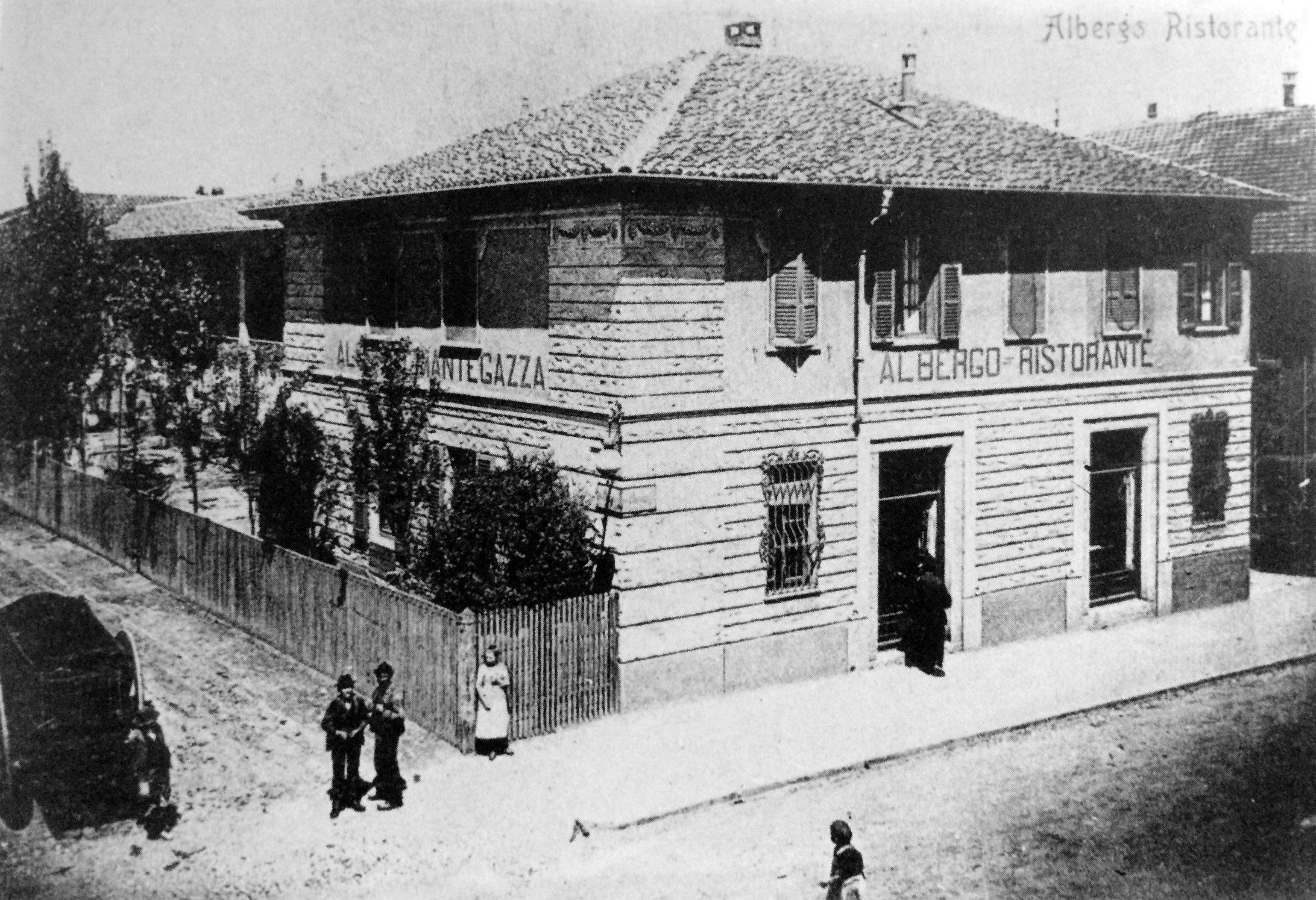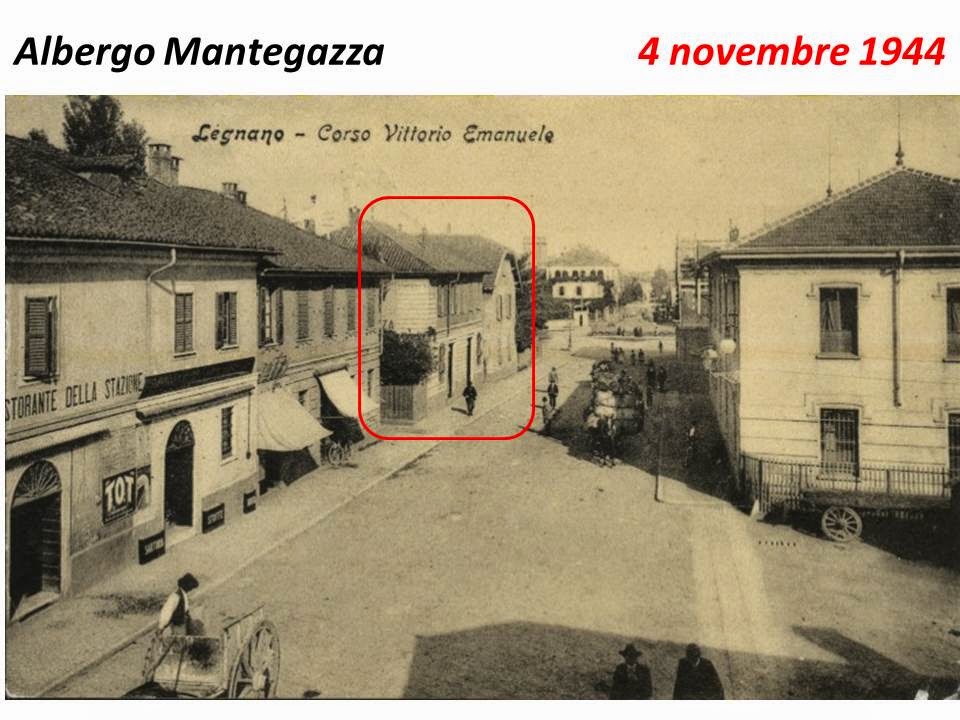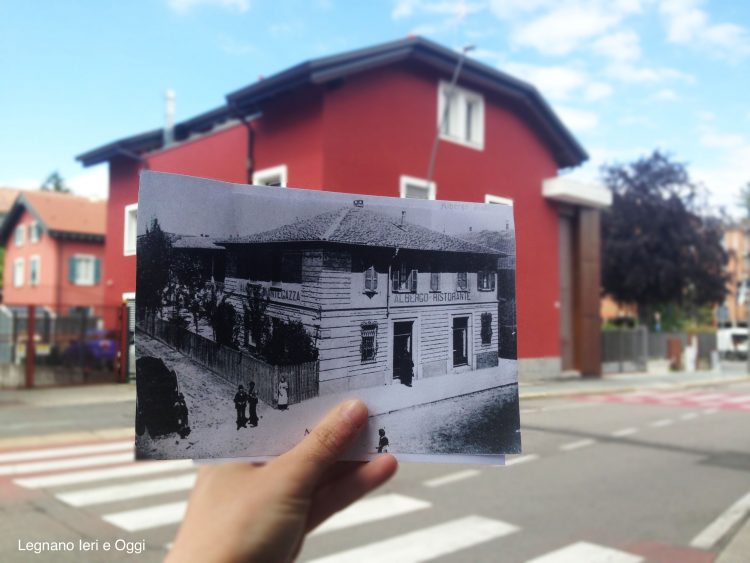La storia dell’albergo Mantegazza è molto importante, poiché ad esso viene ricollegato l’attentato della Resistenza italiana del 4 novembre 1944, contro i nazisti e fascisti, e il novembre di fuoco. L’albergo-ristorante era situato al numero 18 del corso Vittorio Emanuele, ovvero tra il Monumento ad Alberto da Giussano e la stazione ferroviaria. Oggi al posto del vecchio albergo c’è una recente costruzione con annesso il ristorante giapponese “Light contemporary”.
Il “Mantegazza” era diventato da tempo luogo di ritrovo di militari tedeschi, brigatisti neri, ma non si può escludere anche di gente comune vista la prossimità alla stazione ferroviaria. Il giorno prescelto garantiva la presenza nel locale di molte persone perché si festeggiava l’anniversario della Vittoria italiana nella Grande Guerra.

Poco prima delle ore 21 del 4 novembre fu collocato da alcuni partigiani dei GAP un potente ordigno esplosivo sul davanzale della finestra con corta miccia. L’esplosione fu violentissima e si sentì in ogni punto della città. Il bilancio delle vittime fu grave: morirono l’ingegner Hans Kasten, tecnico presso la Franco Tosi, un ufficiale tedesco, il legnanese Carlo Colombo (una spia secondo i partigiani). Il brigatista Renzo Montoli perse la vista e morì pochi giorni dopo. Numerosi furono i feriti. Il locale seriamente danneggiato.
La decisione dell’attentato fu presa all’interno della 101esima SAP di Legnano in accordo con il CLN di Milano. Uno dei motivi per cui si decise di attaccare il “Mantegazza” era per la notorietà del locale pubblico frequentato da tedeschi e fascisti. In città si raccontavano, con esplicita disapprovazione, di feste e festini che si prolungavano nella notte con consumo di bevande alcoliche e alimenti che nel resto della città erano introvabili.
Non si può escludere che l’attentato sia stato anche una vendetta per l’uccisione di Mauro Venegoni avvenuta il 31 ottobre a Cassano Magnano. Mauro Venegoni con il fratello Carlo erano tra i fondatori della Resistenza armata nella Valle Olona. L’assassinio di Mauro richiedeva un’immediata risposta politico-militare per dimostrare che la Resistenza non era morta, anzi proseguiva con la propria strategia volta a portare la guerriglia e il terrore in città.

Un’altra ipotesi dell’attentato, che non cancella la seconda, è una risposta del partigianato legnanese a numerosi arresti tra i comunisti della 101esima SAP (fine ottobre-inizio novembre) tra i quali alcuni capi come Filippo Zaffaroni. Questi arresti, avvenuti anche fuori Legnano, avevano profondamente indebolito la formazione partigiana.
The history of Mantegazza is very important, as it is reconnected to the bombing of the Italian Resistance of November 4, 1944, against the Nazis and fascists, and November of fire. The hotel-restaurant was located at number 18 Corso Vittorio Emanuele, or between the monument to Alberto da Giussano and the train station. Today, instead of the old hotel there is a newly built with the adjoining Japanese restaurant “Light contemporary”.
The “Mantegazza” had long since become a meeting place for German soldiers, blacks Brigades, but you can also exclude the common people given the proximity to the train station. The day chosen ensured the presence in the room of many people because it was celebrating the anniversary of the Italian victory in the Great War.
Shortly before 21 hours of November 4 was placed by some partisans of the GAP a powerful explosive device on the window sill with a short fuse box. The explosion was very violent and felt in every part of the city. The death toll was severe: they died engineer Hans Kasten, technician at the Franco Tosi, a German officer, the legnanese Carlo Colombo (a spy according to the partisans). The Brigades Renzo Montoli lost his sight and died several days later. Many more were injured. The Local seriously damaged.
The decision of the attack was captured within the 101st SAP Legnano in agreement with the Milan CLN. One of the reasons why you decided to attack the “Mantegazza” was for the reputation of the local public frequented by Germans and Fascists. In the city they were told, with explicit disapproval of festivals and feasts that were extended into the night with consumption of alcoholic beverages and foods that the rest of the city could not be found.
One can not rule out that the attack was also a revenge for the killing of Mauro Venegoni took place October 31 in Cassano Magnano. Mauro Venegoni with his brother Charles were among the founders of the armed resistance in Valle Olona. The murder of Mauro called for an immediate political and military response to show that the resistance was not dead, or rather continued with its strategy to bring the guerrilla and terror in the city.
Another hypothesis of the attack, it does not erase the second, it is one of the partisan movement legnanese response to numerous arrests among the Communists of the 101st SAP (late October-early November) including some leaders like Philip Zaffaroni. These arrests also occurred outside Legnano, they had deeply weakened the partisan group.
